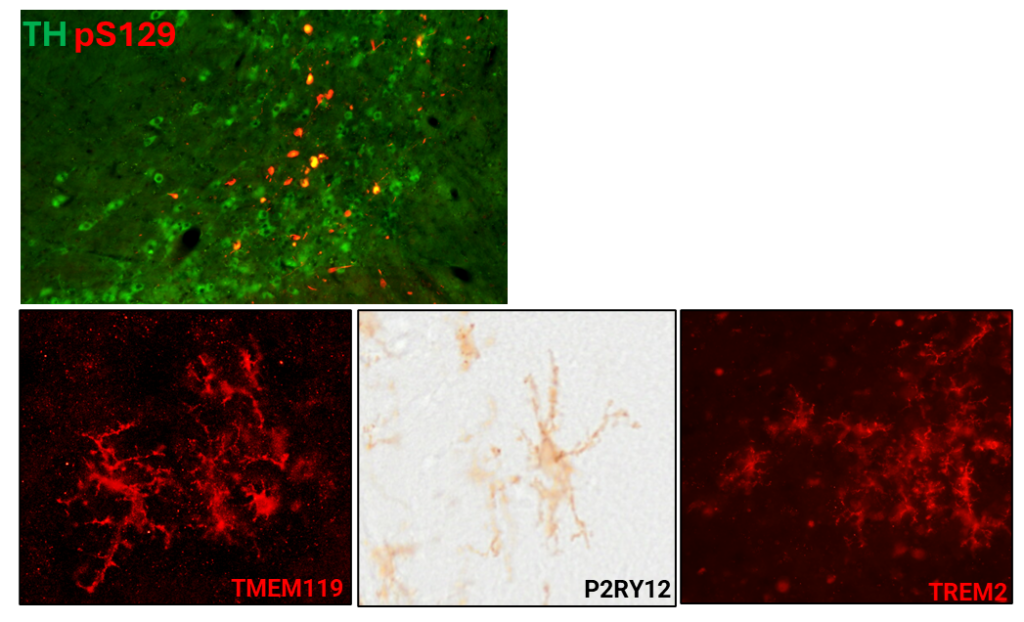Microglia in α-synucleinopathies
Microglia have been observed near dying dopamine neurons in Parkinson’s disease postmortem brains. In addition to microglia’s immune response, they also phagocytose α-synuclein aggregates – indicating them as a key player in how the brain clears away debris and protects neurons. If we can leverage this response to increase protein clearance and reduce aggregates in dopamine neurons, this could be a useful therapeutic strategy. Using iPSCs to create human microglia cells has become a powerful tool to study how they function in health and disease. Human microglia were found to have differential gene expression compared to mouse and further, human microglia cultured in the dish were found to have different gene expression to those in the brain. Therefore, it is important to study these human cells in a whole brain environment so that they most closely resemble that in the human brain.

Top: Immunohistochemical staining of the mouse substantia nigra area with alpha-synuclein phosphorylated at serine-129 in the tyrosine hydroxylase cell bodies and surroundings. Bottom: Human microglia progenitors derived from induced pluripotent stem cells were transplanted to the mouse brain and 3 months later show a mature, brain-resident phenotype at the protein level.
Publications
Niskanen, J., Peltonen, S., Ohtonen, S., Fazaludeen, M.F., Luk, K.C., Giudice, L., Koistinaho, J., Malm, T., Goldsteins, G., Albert, K., & Lehtonen, Š. (2024) Uptake of alpha-synuclein preformed fibrils is suppressed by inflammation and induces an aberrant phenotype in human microglia. Glia. https://doi.org/10.1002/glia.24626
Albert, K., Goldsteins, G., Kälvälä, S., Jolkkonen, J., & Lehtonen, Š. (2024) Glial cell transplant for brain diseases: the supportive saviours? Translational Medicine Communications, 9, 22. https://doi.org/10.1186/s41231-024-00182-y
Albert, K., Kälvälä, S., Hakosalo, V., Syvänen, V., Krupa, P., Niskanen, J., Peltonen, S., Sonninen, T.-M., & Lehtonen, Š. (2022) Cellular Models of Alpha-Synuclein Aggregation: What Have We Learned and Implications for Future Study. Biomedicines, 10, 2649. https://doi.org/10.3390/biomedicines10102649
Albert, K., Niskanen, J., Kälvälä, S., & Lehtonen, Š. (2021) Utilising Induced Pluripotent Stem Cells in Neurodegenerative Disease Research: Focus on Glia. Int J Mol Sci, 22. https://doi.org/10.3390/ijms22094334